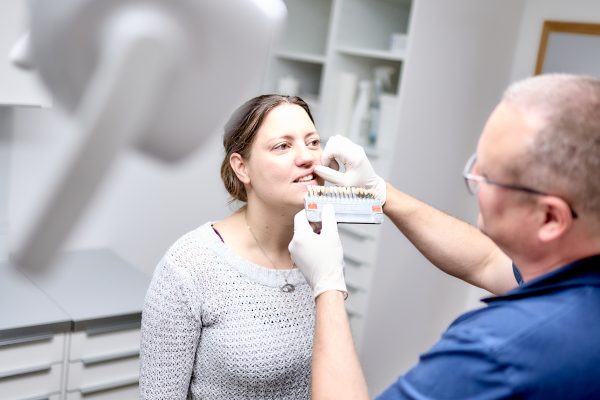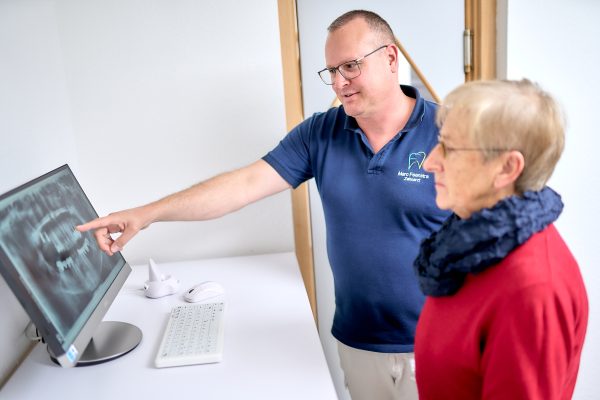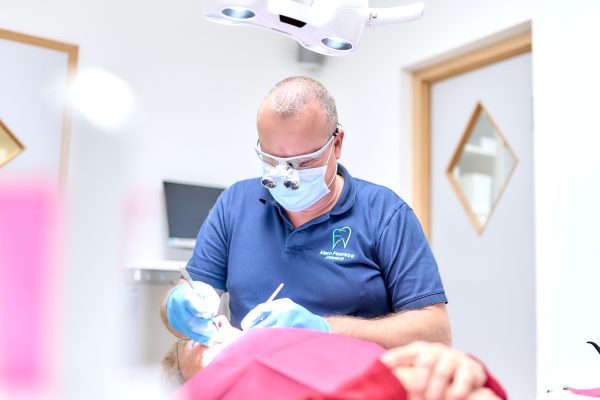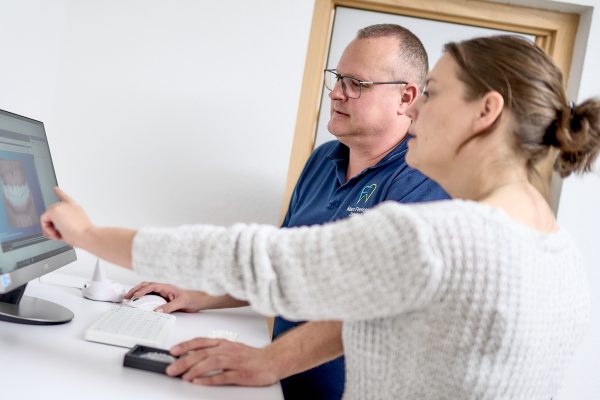If one or more teeth are lost, fixed dentures (crowns, bridges, implants), removable dentures (partial dentures, full dentures) or a combination of both types of dental prosthetics can be fitted, depending on the situation.
Crowns
Crowns restore the function and aesthetics when tooth decay or other events have led to greater loss of tooth hard tissue and the tooth is severely weakened. The tooth must first be prepared for receiving a crown through appropriate preparation. The artificial crown is cemented on the tooth stump.
Bridges
Bridges serve to replace missing teeth. The teeth to be replaced are attached to the neighbouring teeth, which therefore function as bridge pillars.
However, these teeth must first be crowned over. Bridges are cemented to the bridge pillars.
Prosthetics
Prosthetics close gaps in teeth that are not suitable for fixed bridges due to static or other reasons.
Partial dentures
Partial dentures are attached to the remaining teeth via so-called anchoring elements in order to provide the prosthetics with a secure fit.
Complete dentures
Complete dentures can be made for toothless patients. By shaping the prosthetics so that this corresponds to the oral situation, the denture holds onto the toothless jaw.
Implant prosthetics
Using implantology, it is possible to comply with the patient’s request for fixed dentures in the case of missing teeth, without having to grind the neighbouring teeth.
Here, artificial roots (implants) are introduced into the jaw and then supplemented with crowns or other dentures.




